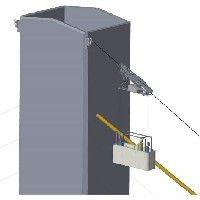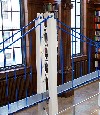The Rande Bridge is a fan-system cable-stayed bridge near Vigo, northwest Spain, spanning the Vigo Ría estuary and linking the municipalities of Redondela and Moaña, around 20km north of the Portuguese border.
The steel-reinforced concrete composite Rande Bridge forms part of the AP-9 Autopista del Atlántico highway that links Portugal’s A-3 highway with the cities of Vigo, Santiago de Compostela, A Coruna and Ferrol in northwest Spain.
The client of the new viaducts is Autopista del Atlantica (Audasa), which has the concession for the 219km AP-9 toll road. The owner is Spain’s Ministry of Development and the contractor is a consortium formed by ACS (Dragados) and Puentes y Calzadas Infraestructuras. The engineers are MC2, part of Typsa, and Manuel Juliá Vilardell, who took part in the construction of the original bridge.
The bridge-widening project involves the construction of two new access viaducts and 706m-long, 5m-wide bridge decks on either side of the existing Rande Bridge, which currently carries four lanes. Additional cables on the existing tower portal frames will support the new bridge decks, which will also be connected to the existing deck with hinged triangular trusses.
Four anchor boxes have been laid on top of the existing towers to accommodate the additional cables that support the new decks.
The 76 deck sections, which were constructed by Dizmar and transported to Vigo by road, are currently being lifted in sections from the sea.
According to a communication by Audasa to the Spain’s Ministry of Public Works, this last phase of the bridge widening project will be completed by 31 August.
At the time of opening in 1978 the 1,558m Rande Bridge was the longest cable-stayed bridge of its type in the world. The main bridge is 695m long and 24m wide and is made of three spans of 147m, 401m and 147m. These spans are of the orthotropic type with a reinforced concrete slab. Its four reinforced concrete towers have a height of 148 metres above the estuary.





